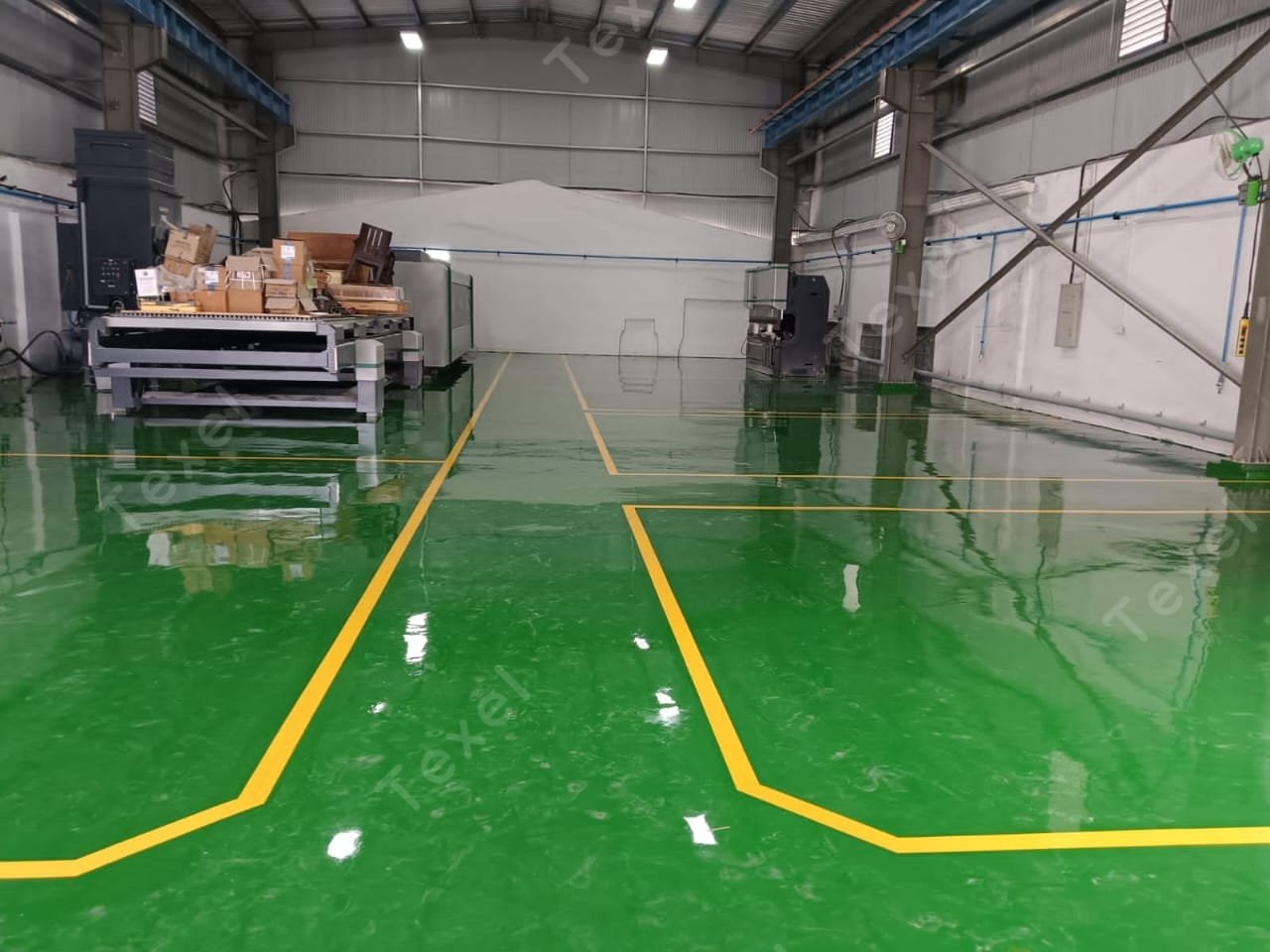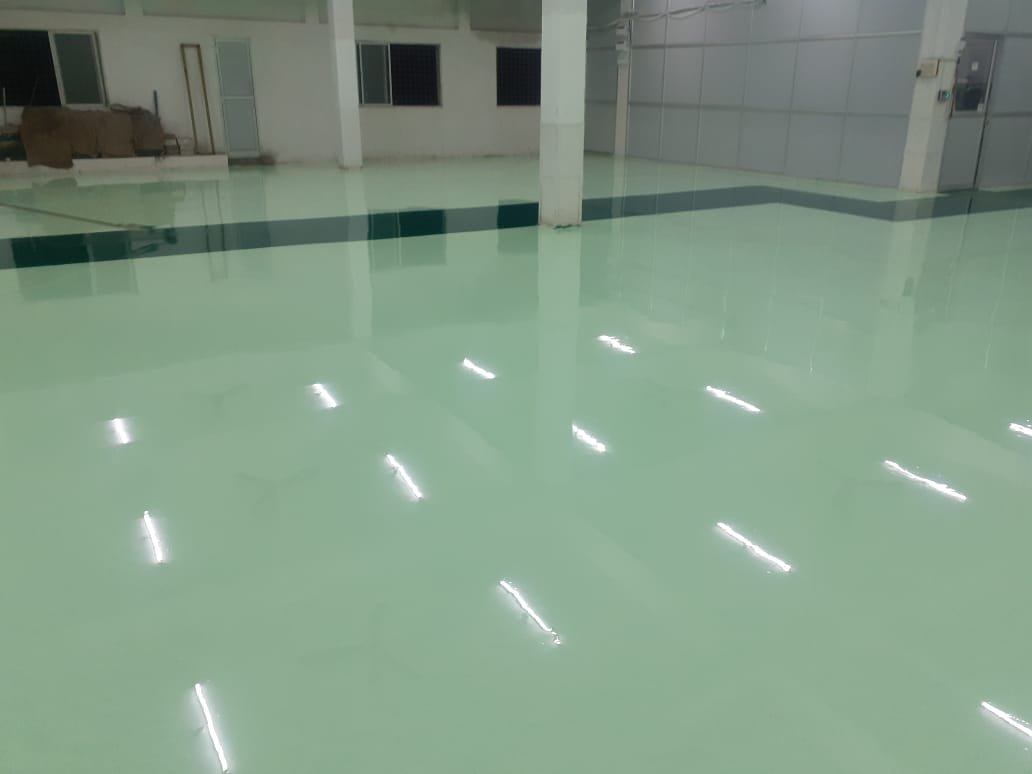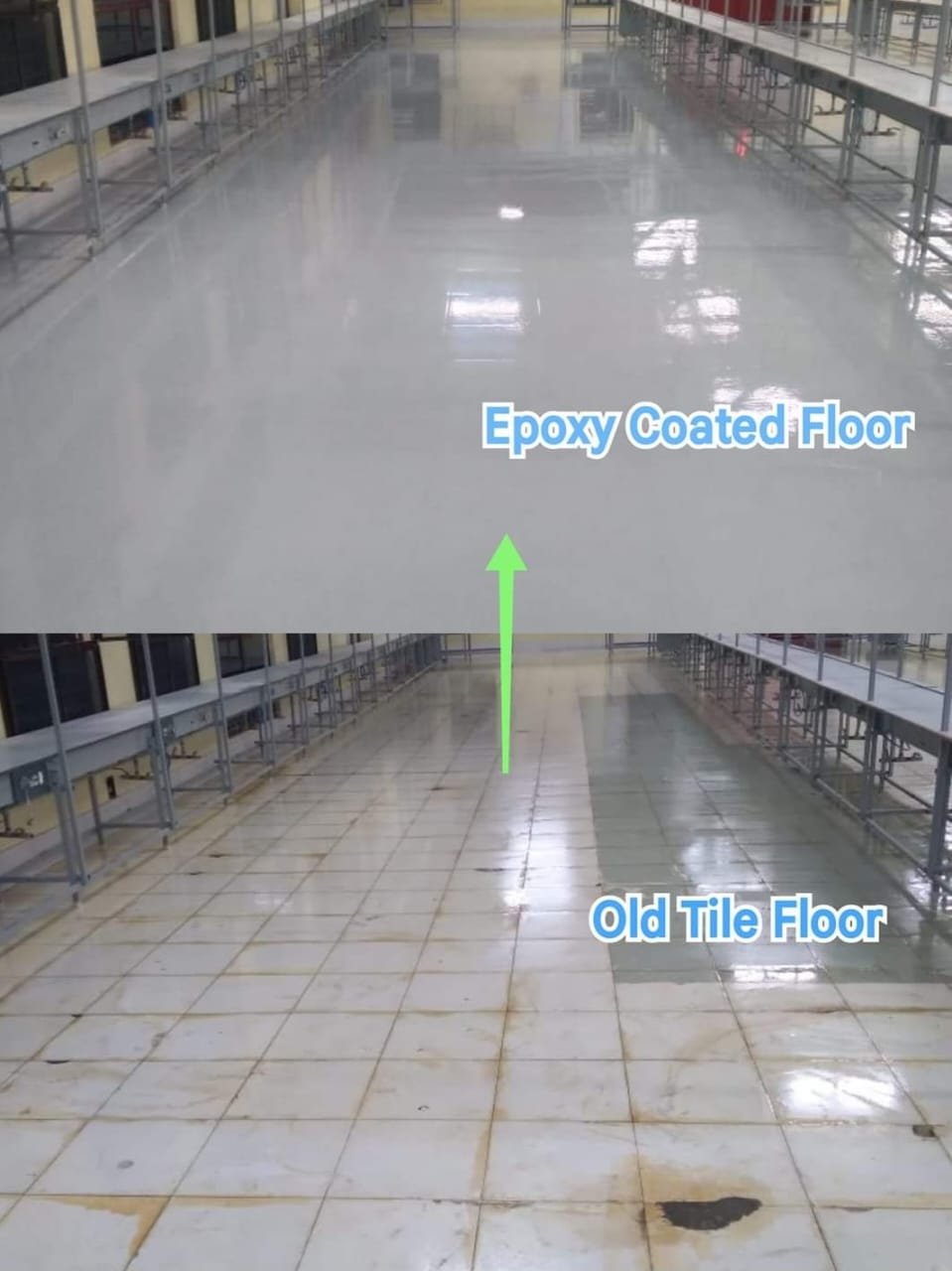EPOXY FLOORING AND MOISTURE IN FLOOR
EPOXY
FLOORING AND MOISTURE IN FLOOR
INTRODUCTION
Epoxy flooring is a durable, high-performance surface
coating widely used in various industries, including manufacturing, commercial
spaces, and software offices. One
of the key challenges in epoxy flooring installation is moisture in the
substrate, particularly in concrete floors. Excessive moisture can lead to
issues such as poor adhesion, bubbling, peeling, and discoloration. Moisture
can come from different sources, including groundwater, humidity, or improper
curing of the concrete slab. Therefore, proper moisture testing and mitigation
techniques are crucial before applying an epoxy coating to ensure a
long-lasting and flawless finish.
TECHNIQUES TO PREVENT MOISTURES IN FLOOR
DURING EPOXY FLOORING INSTALLATION
Preventing moisture-related issues is crucial for a
successful epoxy flooring installation. Here are some key techniques to manage
and mitigate moisture before applying epoxy coatings:
1. Moisture Testing
Before installing epoxy, it is essential to assess
moisture levels in the substrate. Common testing methods include:
·
Calcium Chloride Test
– Measures the moisture vapor emission rate (MVER) of the concrete.
·
Relative Humidity (RH) Test
– Uses in-situ probes to measure the internal moisture content of the concrete.
·
Plastic Sheet Test –
A simple method to check for moisture presence by taping plastic sheets over
the floor and observing condensation after 24-72 hours.
2. Proper Concrete Curing and Drying
·
Ensure the concrete has fully cured before
applying epoxy. The standard curing time is 28 days for new concrete.
·
Use dehumidifiers, fans, or ventilation to
accelerate drying if moisture levels are high.
3. Moisture Barriers and Sealers
·
Vapor Barriers
– Install a polyethylene vapor barrier (typically 10-15 mil thick) beneath the
concrete slab to prevent moisture intrusion from the ground.
·
Moisture-Resistant Primers and
Sealers – Apply an epoxy moisture barrier primer or
penetrating sealer to block moisture movement from the substrate.
4. Surface Preparation
·
Use mechanical grinding or shot blasting
to remove surface contaminants and open the pores of the concrete for better
adhesion.
·
Ensure the surface is completely dry
before applying the epoxy coating.
5. Using Moisture-Tolerant Epoxy Systems
·
Some epoxy products are specifically
designed to tolerate higher moisture levels. These moisture-mitigating epoxy
coatings can help reduce the risks of failure.
By implementing these techniques, the risk of
moisture-related epoxy flooring failures, such as peeling, blistering, or
bubbling, can be significantly minimized. Proper planning and preparation
ensure a durable, long-lasting, and high-performance epoxy floor.
CONCLUSION
Preventing moisture-related issues during epoxy flooring installation is essential
for ensuring a durable, long-lasting, and high-performance floor. By
implementing proper moisture testing, allowing sufficient curing time, using
moisture barriers and sealers, preparing the surface correctly, and selecting
moisture-tolerant epoxy systems, the risk of failure can be minimized.
A proactive approach to moisture control not only enhances the longevity and
aesthetics of the epoxy but also reduces maintenance costs and ensures a
reliable, seamless surface. Proper planning and preparation are key to
achieving a successful epoxy flooring application that can withstand
environmental conditions and heavy usage.
Related Posts
Leave a Reply Cancel reply
You must be logged in to post a comment.




